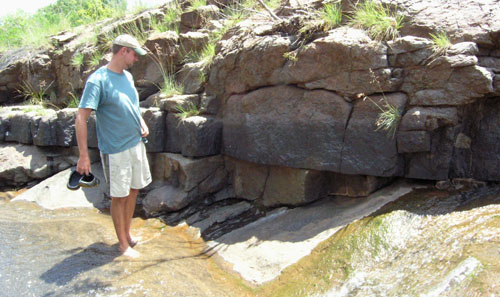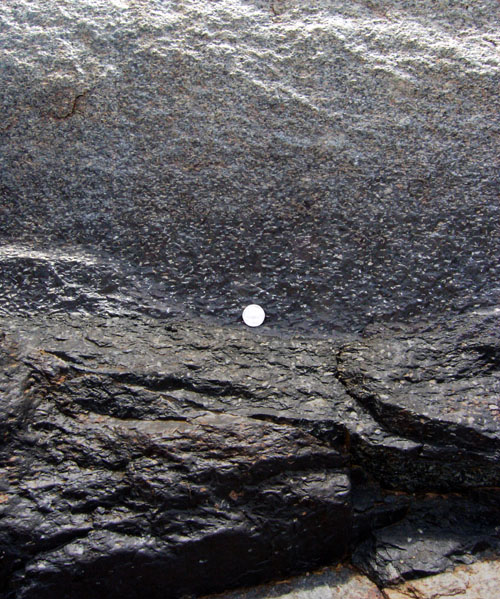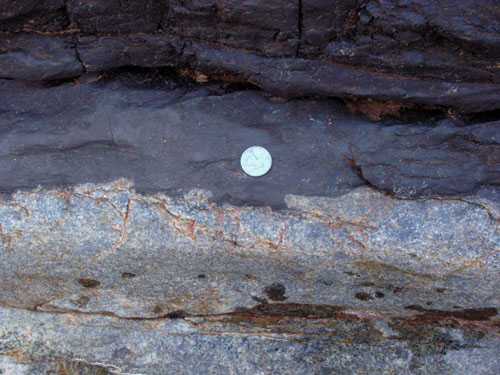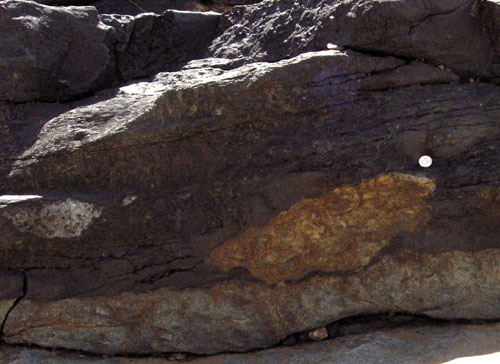As a palaeomagician, there’s an intrinsic interest in having a huge hunk of magnetite (well done to those who eventually worked it out) on one’s desk, even if I’m going to have to be careful not to put it near any of my samples (or my credit cards, for that matter). But how has such a thing come to form? Normally magnetite is a fairly minor component of igneous rocks, and of sediments that are derived from them; what process has produced such a concentrated mass of it? Perhaps taking a closer look of the original sampling locality will gives us a few clues:

Clue 1: The light rock above and below the magnetite layer is anorthosite – a coarse grained igneous rock composed almost entirely of plagioclase feldspar. Coarse-grained usually means slow cooling, so we’re probably in some sort of intrusive rock.
Clue 2: The upper and lower boundaries of the magnetite layer look very different: the lower boundary is sharp, whilst the upper boundary is quite fuzzy. In fact, there is a very clear mineralogical grading occurring within this horizon: as you move upwards through the layer, you start to see more and more plagioclase crystals within the magnetite matrix, until it takes over as the principal consituent and we are back into anorthosite.

The simplest explanation for this is that this whole sequence formed from a magma which took a much longer time than usual to cool, allowing mineral phases which would normally be jumbled together as the rock solidified around them to be separated out by physical processes like gravitational settling.
Clue 3: The lower boundary, whilst compositionally sharp, is not completely flat. In several places you can see undulations where the dense magnetite appears to have pushed down into the anorthosite below, strongly implying that the anorthosite was not completely solid:

Clue 4: How’s this for a xenolith?

This again shows that the formation of the magnetite layer appears to have deformed the material below it.
What’s fascinating about all of this is that while we are definitely dealing with igneous rocks solidified from a melt, many of the features of this outcrop – grading, deformation of apparently unlithified rocks – are more reminiscent of sedimentary environments. This sort of thing can only happened when a large pool of melt is injected into the crust in one go. Such a large intrusive body takes a long time to completely cool and solidify, which allows melt to persist for long periods within the system. This means that newly formed crystals are in suspension in the magma, just as sediment particles are suspended in river, lake, and ocean water; hence they can be carried around, and sorted into layers, and deformed before they are completely rigid. How big does the intrusion have to be for such processes to have a significant effect? You’ll have to wait until tomorrow’s post to find out, but I’ll tell you right now that the answer in this case is ‘pretty big’.



Comments (11)